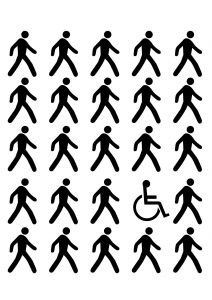Damage to the spinal cord generally causes permanent injuries. One factor that can impact the extent of spinal cord injury is the age of the victim. A new study suggests older individuals may have a worse prognosis when spinal cord damage occurs. 
Those responsible for causing an injury to the spine must fully compensate the victim for all costs. The fact that the victim’s age is a factor in the severity of the injury does not absolve a negligent party of being responsible for covering treatment expenses, lost wages, pain and suffering, emotional distress and other damages. A Boston personal injury lawyer can help those who have suffered a spinal cord injury to pursue a damage claim to obtain compensation.
Spinal Cord Injuries Worse for Older People
According to Laboratory Equipment.com, new research published in the Journal of Neuroscience has demonstrated that elderly mice experience a different healing reaction and thus suffer more serious spinal cord injuries than younger mice. The new research confirms previously anecdotal findings that have been observed in clinical settings. The research may also prove useful in assisting with treating spinal cord patients by providing more insight into the healing process.
The difference in recovery due to age may be caused by the way in which the immune cells are stimulated after an injury occurs.
When young mice suffer a spinal cord injury, microglia activate a receptor on their surface that is called the IL-4 receptor. The job of the receptor is to see the infusion of interleukin-4 (IL-4) in the central nervous system after a spinal cord injury happens.
This receptor is a key messenger in the central nervous system. The receptor, when activated, recognizes and uses an inflammation-related signaling chemical found in the central nervous system. In other words, the younger mice ended up experiencing a more inflammatory response that turned out to be beneficial after a spinal cord injury.
For older mice, unfortunately, the microglia do not activate this receptor. This has consequences in the recovery process because different cells are recruited to the injury site when the receptor is activated.
The cells recruited to the injury site in the young mice appear to have more value in the repair process than the immune system cells that show up in older mice. The differences in cells that show up have a measurable impact on the patient’s prognosis. For example, for older mice with no receptor activation, the lesions on the injured spinal cord were an average of 38 percent larger. The younger mice were also better able to regain movement in their hind limbs and regained movement more frequently, while some of the older mice never regained the same level of mobility as the younger counterparts.
The results were surprising because increased inflammation is usually associated with age, and yet the positive inflammatory response was not occurring in older mice. This not only provides insight into the impact of age on a spinal cord injury but also helps to provide researchers with more data on how the IL-4 has a unique role to play in the spinal cord injury paradigm. This could perhaps help researchers to move forward in better understanding how to treat injury to the spine.
If you are injured in an accident in Massachusetts, call Jeffrey Glassman Injury Lawyers for a free and confidential appointment — (617) 777-7777.
More Blog Entries:
Pedestrian Seriously Injured in 3-Car Accident on Sidewalk, October 31, 2013, Boston Personal Injury Lawyer Blog
 Boston Personal Injury Attorney Blog
Boston Personal Injury Attorney Blog

